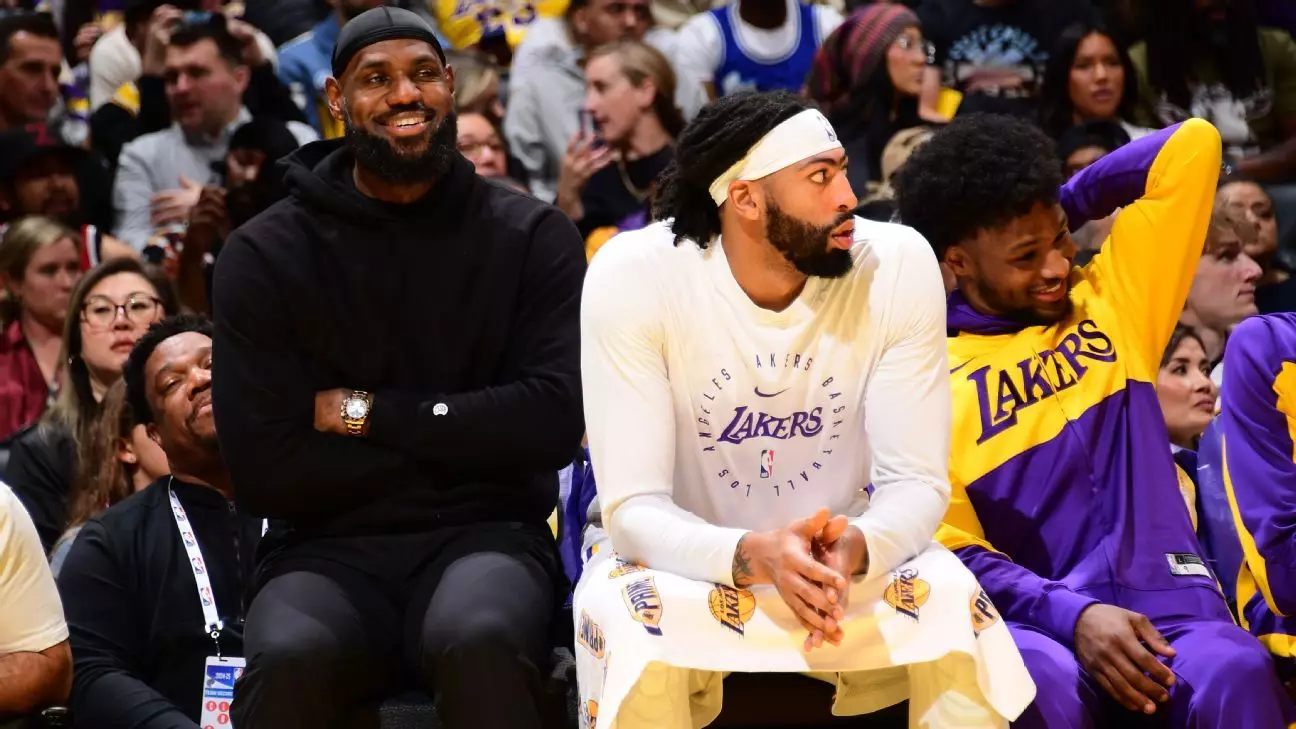In an unexpected turn of events, Los Angeles Lakers star LeBron James missed his first game of the season last Sunday against the Portland Trail Blazers due to left foot soreness. This marked a noteworthy moment for a player who has been a paragon of durability and performance in the NBA. The discomfort first emerged following the Lakers’ challenging loss to the Miami Heat, illustrating the physical toll that the season can exert on even the most elite athletes at 39 years of age.
Prior to his absence, James had been showcasing a remarkable level of play. During an overtime thriller against the Atlanta Hawks, he logged a season-high of 43 minutes, scoring an impressive 39 points while also contributing significantly in rebounds and assists. Statistically, this season has seen James average around 23 points per game on nearly 50% shooting and almost 9 assists and 8 rebounds. Not only are these numbers impressive, but they also position him as one of the most productive players in NBA history at this stage of his career.
James’s last-minute decision to sit out against the Trail Blazers left a significant gap in the Lakers’ lineup. Initially listed as doubtful, he was later upgraded to probable, only to be downgraded again close to game time. This uncertainty raised eyebrows concerning his health and the team’s performance moving forward. Lakers coach JJ Redick expressed the necessity for the team to adapt, emphasizing the importance of movement, cutting, and passing in James’ absence. His insights indicated a tactical pivot that underscores how reliant the team is on its star player’s presence.
With the Lakers not scheduled to play again until Friday against the Minnesota Timberwolves, there could be a silver lining to James’s situation. The extended break allows for potential recovery and rehabilitation, potentially positioning James to return even stronger. Redick echoed this sentiment, noting that while the absence of a player like James is less than ideal, the downtime could serve as an opportunity for him to heal and recharge.
The absence of another key player, guard Austin Reaves, who missed his fifth consecutive game due to a left pelvic contusion, further complicates matters for the Lakers. As the team adapts to these challenges, it reinforces the need for resilience and teamwork in the face of adversity. Coaches and players alike must adjust their strategies, ensuring that they remain competitive even without their star assets on the court.
As the Lakers navigate this period, the focus remains on balancing recovery with performance. The coming days will be crucial as the team prepares for their next game, allowing both James and Reaves the necessary time to recuperate. While injuries pose challenges, they also open avenues for growth and adaptation within the team. For a franchise accustomed to high stakes, it’s all about turning setbacks into strategic advantages as the season progresses.

